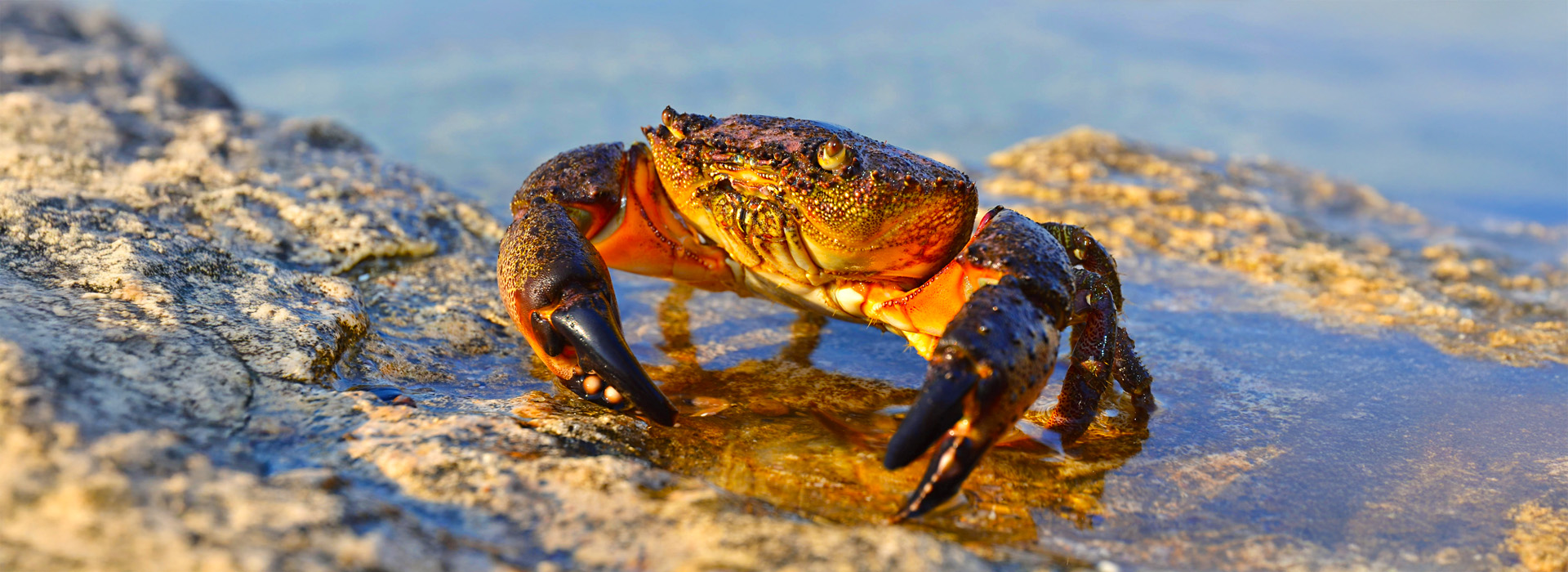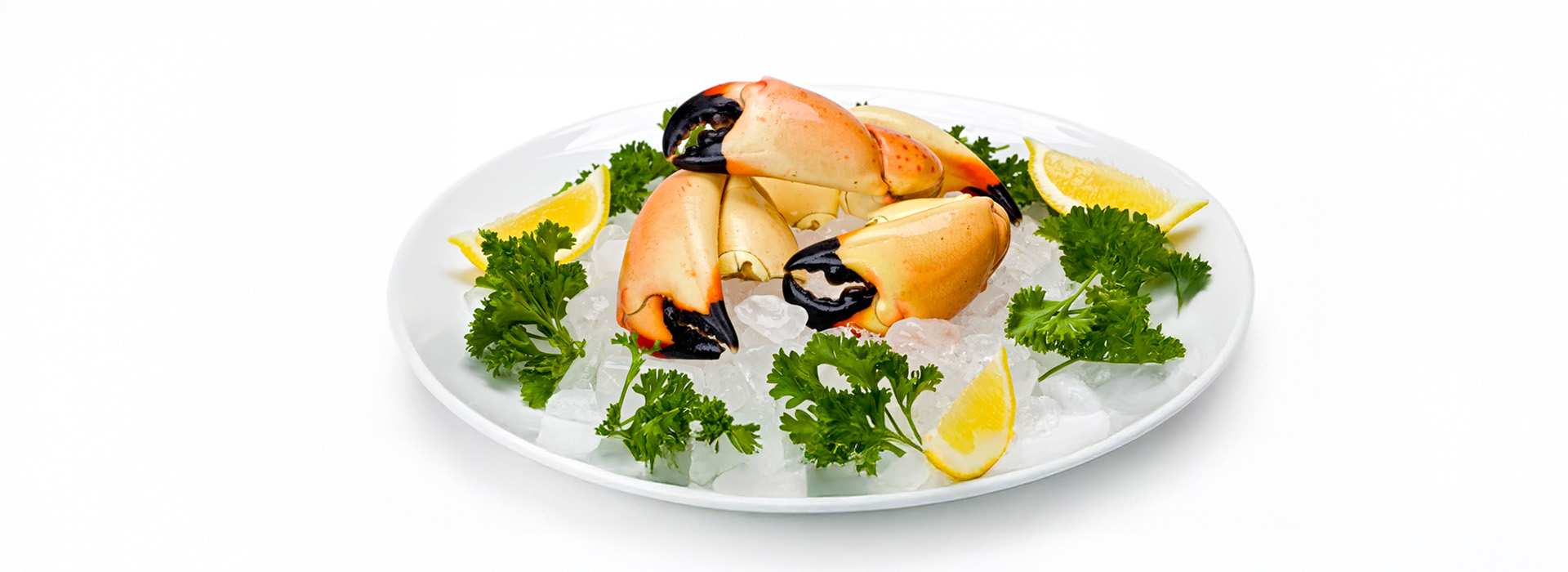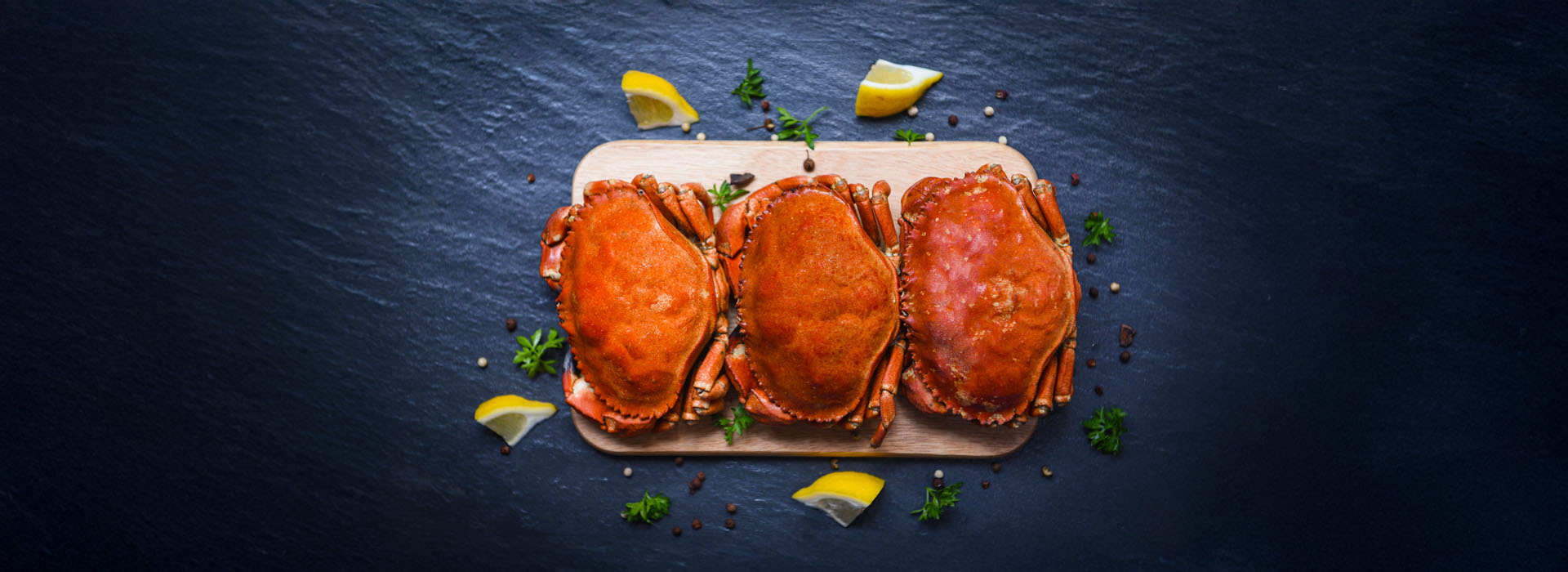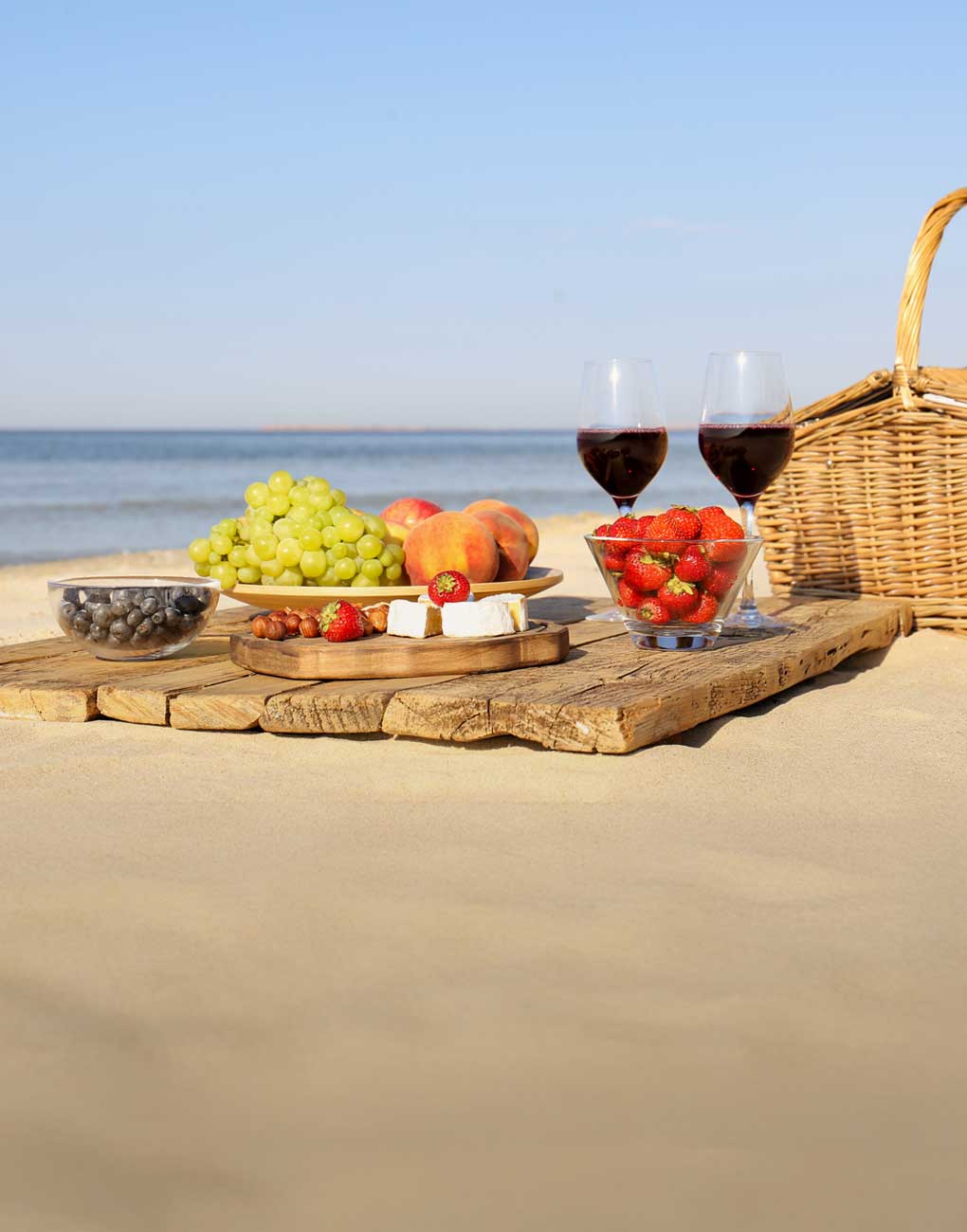Stone crab season runs from October 15 through May 15 each year. During this time, restaurants, fish markets and culinary schools across the island feature fresh stone crab Key West-style dishes. It is one of the best times to explore local seafood traditions and try your hand at cooking stone crab claws at home. Many visitors plan their trips around this season, knowing they will find top-quality, freshly harvested claws available in local markets and on menus across town. From casual beach cafes to upscale dining spots, stone crab is celebrated as a seasonal delicacy throughout Key West.
The Guide to Stone Crab Claw Season in Key West
Stone crab season is one of the most anticipated times of year for seafood lovers visiting Key West. Running from October 15 to May 15, it marks a stretch of months when fresh, flavorful crab claws become a staple on menus across the island. With its sweet meat, minimal seasoning requirements and rich culinary tradition, stone crab Key West-style is something visitors return for year after year.
What makes this season even more special is the method used to harvest the crabs. Only one claw is removed, and the crab is returned to the water alive, giving it a chance to regenerate over time. This sustainable practice helps preserve the local marine ecosystem and ensures the long-term health of the fishery. For guests looking to experience fresh seafood while also learning how to prepare it, cooking stone crab claws becomes a memorable way to connect with the island’s food culture.
Understanding Stone Crab Claws
Not all crab claws are the same. When shopping or planning your menu, it helps to know the types and sizes. Stone crab Key West varieties are typically sold by size: medium, large, jumbo and colossal. Medium and large are perfect for appetizers or tasting platters, while jumbo and colossal claws are often served as the centerpiece of a full meal. No matter the size, the key is freshness.
You can find claws at local fish markets, through direct relationships with fishers, or sometimes at select restaurants offering take-home seafood packs. Ask for freshly cooked, never-frozen claws, and check that the shells look firm and intact. A cracked or mushy shell can mean the claw has been sitting too long. When it comes to cooking stone crab claws, starting with quality is the most important first step.
What Are the Perfect Preparation Techniques of Stone Crab Claws?
Cleaning and Cracking
Before you serve your claws, you’ll need to clean and crack them properly. Begin by rinsing each claw under cool water to remove any leftover sand or sea debris. Gently dry them with a clean towel. You’ll want a seafood cracker or wooden mallet, a small fork or pick, and a towel to grip the claw without slipping.
Tap each claw gently but firmly around the thickest parts of the shell. You are aiming to fracture the shell without crushing the meat. Once the shell begins to break, you can peel away pieces with your hands or a fork. The meat should remain whole and come out easily if the shell is properly cracked.
Serving Suggestions
For cold presentations, a classic mustard sauce is a must. Our chefs at Key West Cooking School® often prepare a traditional Key West mustard sauce using Dijon mustard, mayonnaise, Worcestershire, lemon juice and a few house touches. Other dipping favorites include melted butter, citrus aioli and a fresh herb vinaigrette.
Chill the claws on crushed ice, garnish with lemon wedges and serve with ramekins of sauce. Presentation can make even a simple platter feel like something special.
For a warmer take, try steaming the claws for five minutes or gently baking them at low heat until warmed through. Always serve hot claws with drawn butter and a light squeeze of Key lime.
Local Cooking Demonstrations at Our Studio
Key West Cooking School® offers a chance to learn firsthand how local chefs approach cooking stone crab claws and other Florida seafood favorites. Our daily demonstration-style classes are hosted in a relaxed, welcoming environment that blends storytelling, technique and delicious food. Guests can watch as chefs break down fresh ingredients, prepare complete meals and explain tips they’ve learned from years of cooking in coastal kitchens.
Morning and afternoon sessions are available, and every class includes a full meal, printed recipes and the school’s signature DinnertainmentTM experience. During stone crab season, guests often get to see how these prized claws are prepared, plated and served. Whether you are new to seafood or simply want to explore a new way to cook it, these classes are an ideal starting point.
Appetizers
Our chefs like to begin with small bites that showcase the rich, sweet flavor of stone crab Key West-style. Mini crab claw cocktail cups are a guest favorite, served chilled with a side of mustard dipping sauce that cuts through the richness of the meat with just the right amount of tang. Citrus-marinated stone crab salad is another go-to, combining freshly picked greens, juicy orange segments and a citrus vinaigrette that ties it all together. For something heartier, stone crab sliders on brioche buns with creamy slaw offer a satisfying bite that still feels light enough to kick off a meal. These appetizers not only introduce the flavor profile of cooking stone crab claws, but also pair well with sparkling wine or citrus-forward cocktails, making them ideal for entertaining or hosting a casual dinner party at home.
Main Dishes Featuring Crab Claws
Stone crab claws also shine as the star of the plate. In our classes, chefs demonstrate how to make stone crab linguine with lemon cream and herbs — a dish that balances richness with acidity and lets the crab remain the focal point. Florida-style crab claw platters come next, often served with grilled seasonal vegetables like zucchini, asparagus or blistered tomatoes for a fresh contrast. Broiled claws are a favorite for their simplicity. They are brushed with garlic butter and paired with sweet corn to create a straightforward, satisfying entrée. At Key West Cooking School®, we emphasize that cooking stone crab claws does not require overcomplication. Instead, we teach our guests how to enhance the natural sweetness of the crab with thoughtful, balanced accompaniments. No matter how you prepare them, stone crab Key West inspired entrées are always a crowd-pleaser.
Side Dishes To Complement Stone Crab
No meal is complete without the right side dishes. Our chefs recommend pairing your stone crab meal with fresh, vibrant plates that support the flavor of the claws without competing with them. Island slaw made with shredded cabbage, lime and diced mango brings crunch and brightness to the table. Grilled corn, slathered with cayenne-lime butter, adds a touch of heat and smoky flavor that complements both hot and cold crab dishes. Coconut rice and roasted sweet potatoes with herbs offer a heartier base and bring out the richness in each bite of crab. These sides not only complete the plate but also help create a full island-inspired meal that’s both comforting and fresh. For anyone planning a full seafood dinner, adding sides like these is the perfect way to round out your cooking stone crab claws experience.
What Drinks Complement Stone Crab Claws?
Pairing beverages with seafood is all about contrast, balance and enhancing the natural sweetness of the meat. Our chefs suggest starting with a crisp white wine such as Sauvignon Blanc or unoaked Chardonnay, which cuts through the richness while refreshing the palate. Craft cocktails also work beautifully, especially a Key lime mojito that mirrors local flavors or a grapefruit spritz that adds a zesty twist. The Key West Cooking School’s® cocktail classes are a great place to learn new recipes and pairing guidance.
If you prefer beer, local favorites like Island Life Lager from the Waterfront Brewery bring a light, tropical finish that pairs perfectly with chilled or broiled crab. These selections ensure that every element of your stone crab Key West experience is thoughtfully curated, from first bite to final sip. If you’re learning about cooking stone crab claws for the first time, the right drink can elevate the entire meal.
Conclusion
Stone crab season in Key West is a true celebration of flavor, heritage and local pride. Whether you are browsing the day’s catch at a local market, preparing your own meal at home or joining a cooking demonstration at Key West Cooking School®, there is no shortage of ways to embrace the joy of cooking stone crab claws.
The Key West Cooking School’s® classes go beyond technique. They offer stories, flavor pairings and tips that bring every dish to life in an approachable and engaging way. Guests leave with full stomachs and new skills they can take home to recreate the flavors of the Florida Keys. Sharing stone crab Key West dishes with family, friends or colleagues is one of the most enjoyable and meaningful culinary experiences you can have on the island.
For those who want to continue exploring, we recommend diving into the Key West Woman’s Club Cookbook. This collection preserves treasured recipes from generations of island cooks, including many that highlight local seafood like stone crab Key West-style. It is more than just a cookbook. It is a piece of culinary history and a reflection of the culture that makes Key West so special.
FAQs
Yes. During stone crab season, many of our cooking demonstrations include dishes that highlight these local delicacies. Guests learn how to crack and serve the claws, create traditional dipping sauces and build full meals around this sweet, rich seafood. Our chefs explain sourcing, storage and presentation tips to ensure you leave with practical knowledge you can use at home. We emphasize simple techniques that let the flavor of the crab shine, giving you confidence in cooking stone crab claws even if it is your first time working with them.
Absolutely. Our demonstration-style classes are designed for all levels of experience. Whether you’re new to cooking stone crab claws or just looking to refine your technique, our chefs guide you through every step with approachable, friendly instruction. You do not need to bring any tools or ingredients — just curiosity and an appetite. By the end of the class, even first-timers walk away with useful tips and the confidence to recreate what they’ve learned in their own kitchens. The relaxed pace and engaging format make our classes a favorite among both locals and visitors.
Jumbo and colossal claws hold up well to grilling. Their size and thicker shells allow them to retain moisture and flavor. We often recommend brushing them with a simple herb butter before grilling, then serving with lemon wedges and sides like coconut rice or island slaw. These larger claws are easier to work with on the grill and deliver an impressive presentation on the plate. When cooking stone crab claws over open heat, the goal is to warm them through gently without drying them out. A quick sear adds a touch of smoky flavor without overpowering the sweetness of the crab.
Keep the claws chilled but not frozen. Store them in the coldest part of your refrigerator on a bed of crushed ice, ideally covered with a clean, damp cloth. Use them within 48 hours of purchase for the best flavor and texture when cooking stone crab claws. If the claws have already been cooked, avoid re-cooking them to preserve the meat’s delicate texture. Instead, gently reheat or serve them cold with sauces or sides. Proper storage ensures your stone crab Key West meal tastes just as fresh as it was meant to.
Local fish markets are your best option in Key West. Ask for freshly cooked claws that haven’t been frozen, and look for clean, unbroken shells. Many restaurants also sell take-home seafood packs during the season, giving you another way to access top-quality stone crab Key West offerings. Some local fishers sell directly off the docks, which is a great way to ensure your seafood is as fresh as possible. Always ask about when the claws were harvested and cooked so you can plan your meal accordingly. Quality ingredients make all the difference when cooking stone crab claws at home.








